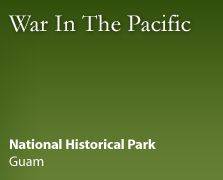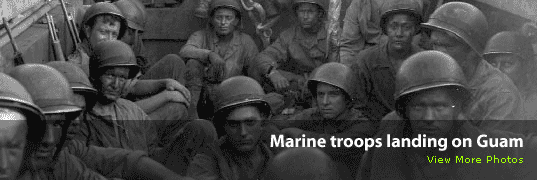| |
The US Navy launched its Central Pacific Offensive in November 1943, with landings in the central Gilbert Islands known as “Operation Galvanic.” The invasion plan was based on the pre-war “Orange Plan,” which pitted the fleet in a hypothettical war against the Japanese.
The Tarawa campaign involved the landings on Betio islet of Tarawa Atoll, Makin Atoll, and Apamama (Abemana) Atoll. Vice Admiral Spruance’s Fifth Fleet carried out the operation. Rear Admiral Richmond Kelly Turner commanded the assault forces. Major General Holland M. Smith, USMC commanded the newly formed Fifth Amphibious Corps. Only light resistance was encountered at Makin and Apamama, but Betio (pronounced: Bay-she-o), Tarawa, the 2.5 mile islet located in the southwest of the atoll, was heavily garrisoned by some 4,800 naval troops, among them 2,619 men of the Special Landing Force under Rear Admiral Shimbasaka Keiji.
The US Second Marine Division under Major General Julian C. Smith, USMC, carried out the landing at Betio. The islet fell after 76 hours of savage fighting in which 1,009 US Soldiers – mostly marines- were killed, 2,101 were wounded. Only 17 Japanese defenders and 129 Korean workers survived.
The landings at Tarawa confirmed the basic technical soundness of the amphibious operations that the Marine Corps had developed between the wars. The tactic was inspired and initially articulated by Lt. Colonel Earl H. Ellis, USMS, who had traveled in the Japanese mandates in the early 1920s.
Dirk Anthony Ballendorf
|
|





